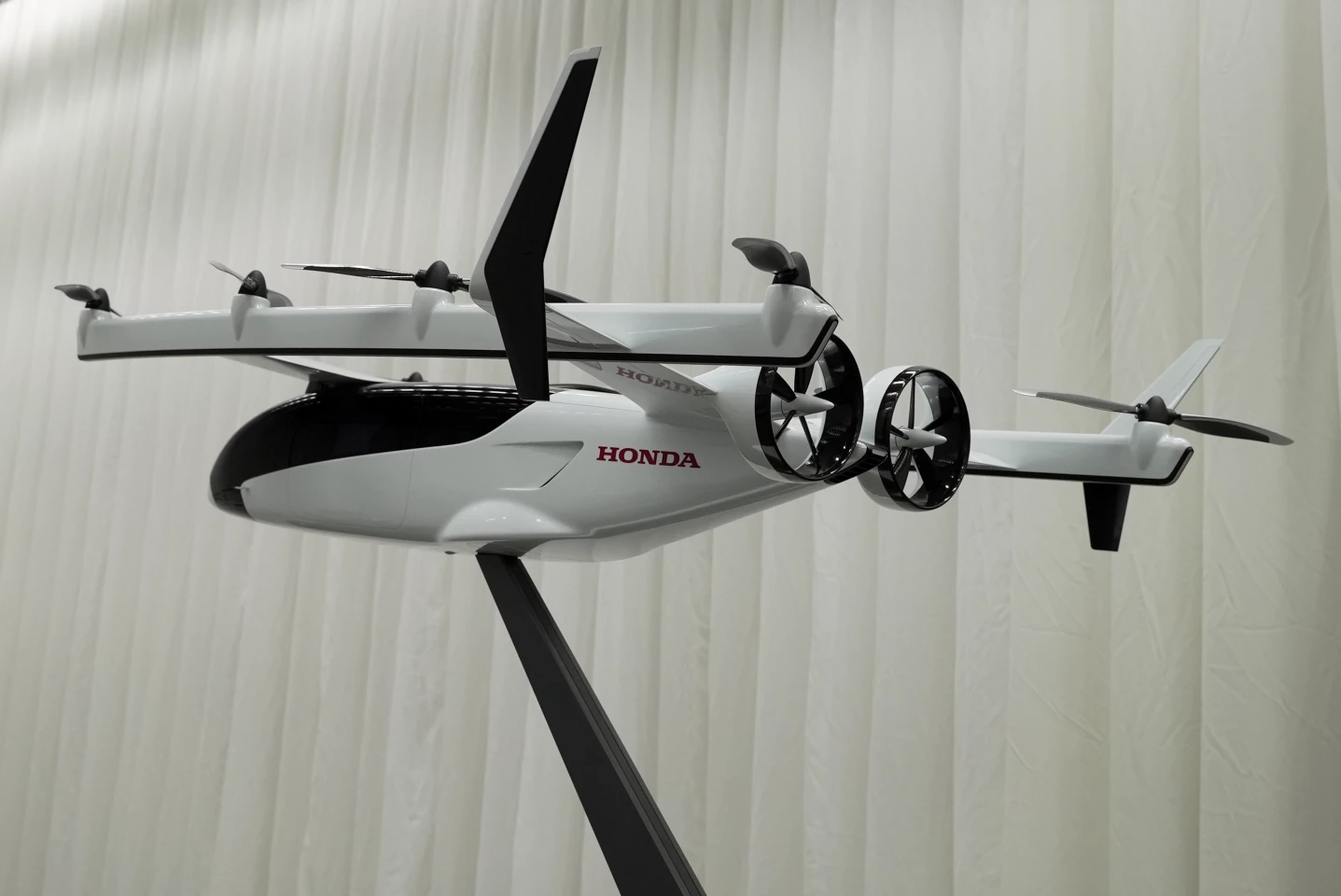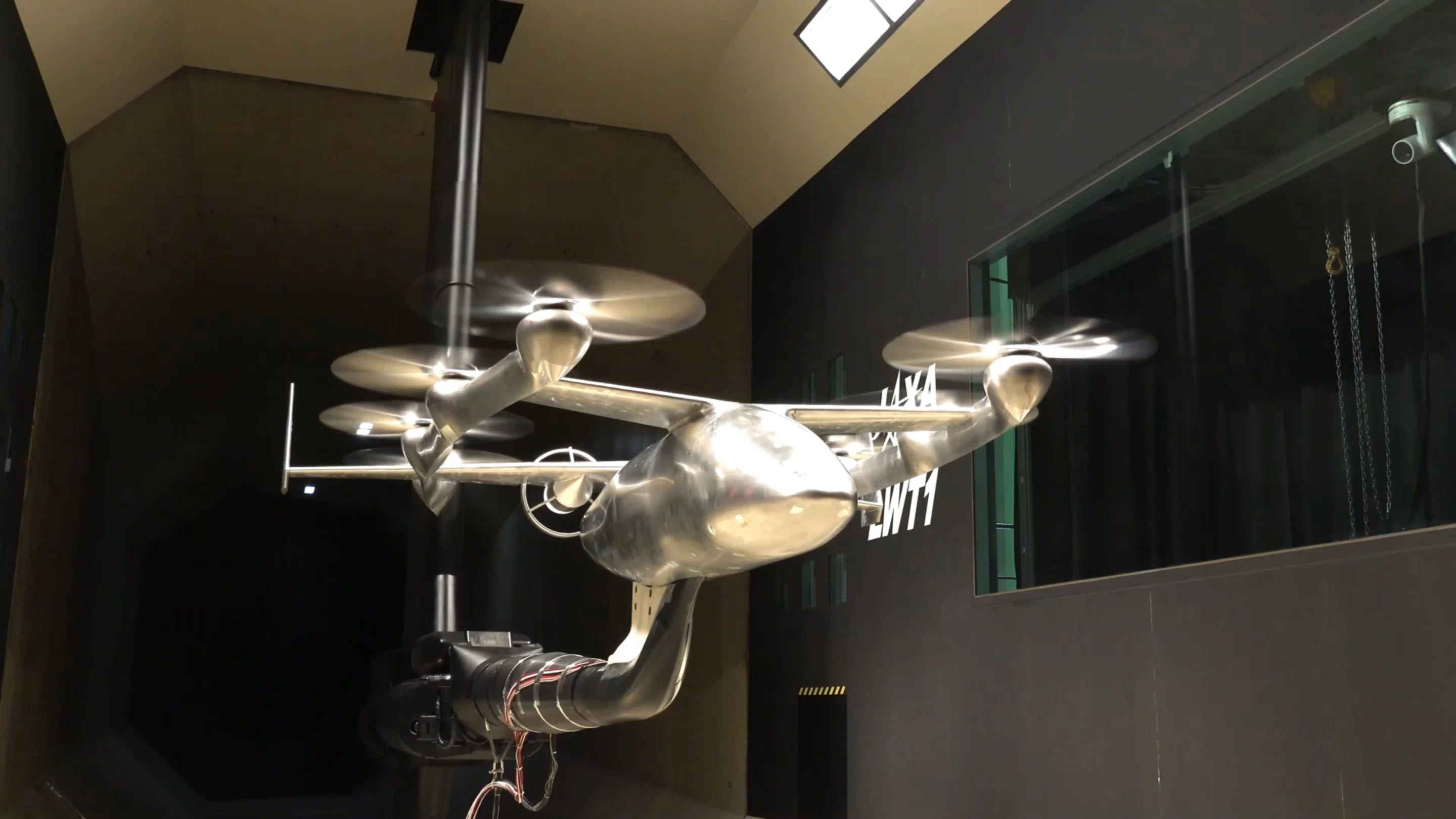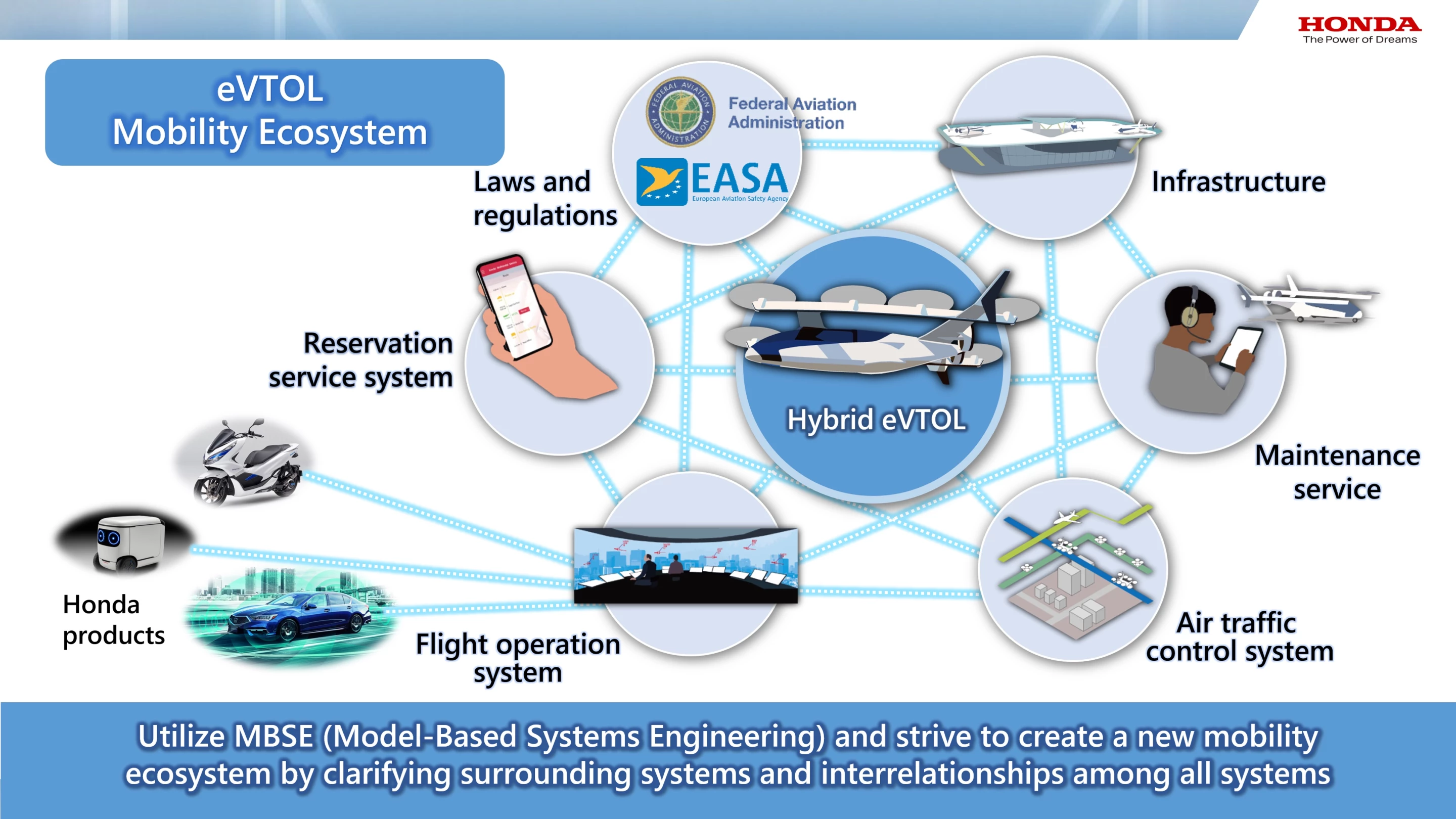Honda has laid out new technologies it plans to pursue in the coming decades. Building on current areas of expertise, the company will look to develop an eVTOL for inter-city transport, a robot that will act as an avatar for users to perform tasks remotely, and a renewable energy system for the Moon, among other things.
From its start making motorized bicycles using surplus war parts, Honda has grown into a multinational with core technologies ranging from combustion engines to robotics, and it is these technologies it will leverage when pursuing new products.
eVTOL for inter-city transport

With the fixed-wing HondaJet under its belt, Honda is looking to expand into the burgeoning eVTOL space. Unlike a number of other eVTOLs in development that are focused on short-range intra-city trips due to the limitations of battery-powered powertrains, Honda’s offering will pack a gas turbine hybrid power unit to increase range and enable inter-city travel.
Honda says its aircraft will achieve safety levels equal to that of commercial passenger planes thanks to a simple structure and decentralized propulsion system. Noise would also be kept down through the use of rotors with a relatively small diameter, making it possible for the aircraft to take off and land in city centers with minimal disruption.
The company also says its eVTOL will serve as the core of a new “mobility ecosystem” that will enable coordination with air traffic control and reservation systems, and integration with ground transport, including cars, bikes and driverless vehicles.
Honda Avatar Robot

In 2018, Honda announced it would cease development of ASIMO, one of the world’s most recognizable humanoid robots, to focus on practical applications for the technology it had developed. Following in ASIMO’s footsteps will be the Honda Avatar Robot, which users would take control of to carry out tasks remotely and experience things virtually.
To this end, the telepresence robot will feature a multi-fingered hand for manipulating tools designed for human hands. To make it easier for users to perform complex tasks quickly and accurately using the robot, its control system will feature future iterations of the company’s AI-supported remote control function technology, which will let the user-guided robot grasp an object in one smooth motion and hold it with the appropriate level of force.
Honda says it is currently working on improving and miniaturizing the hand movement technology and hopes to perform demonstrations of the Avatar Robot by early 2024, with a view to a release in the 2030s.
Moon shots

As part of a joint research effort with the Japan Aerospace Exploration Agency (JAXA), Honda is looking to construct a circulative renewable energy system for use on the Moon. By drawing on Honda's high differential pressure water electrolysis technologies, the system would decompose water to produce and store hydrogen and oxygen using electricity from solar. Then, leveraging its fuel cell technologies, that hydrogen and oxygen can be used to supply electricity, while the oxygen could also be used for people staying on the lunar surface or as fuel for rockets.
Honda will also seek to apply the aforementioned Avatar Robot’s multi-fingered robotic hand and AI-supported remote control system to collision mitigation of remotely controlled robots on the lunar surface. The robot's telepresence technology would also be used to reduce the risks for astronauts on the Moon and to let people experience being on the lunar surface from Earth.
Finally, prompted by Honda engineers who wanted to leverage the company’s combustion and control and guidance technologies amassed through the development of automated driving technologies to build a small rocket, Honda is planning to get into the satellite launch business. The small rocket will be designed to act as a launch vehicle for small, low Earth orbit satellites, a market Honda says is currently underserved.
“All of the initiatives we introduced today are for the challenges Honda takes on in new areas, but the underlying passion of Honda to use our technology to make people’s lives more enjoyable remains unchanged,” says Keiji Ohtsu, President and Representative Director of Honda R&D Co., Ltd. “Ever since the company’s founding, the wellspring of Honda’s challenges has always been the people at Honda who generate original technologies and ideas. Through the creation of new mobility, Honda will continue striving to change the value people place on mobility and make positive changes to our society.”
Source: Honda













